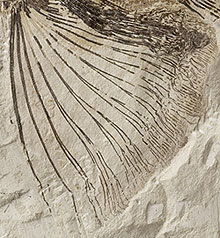Fish flight

Very enlarged pectoral fin of C. lewisii.
Flying fish have developed the ability to leap out of water at high speed then glide up to several hundred meters by utilizing their enlarged pectoral fins as ‘wings’.
Several bony fishes developed the capacity to perform either
- simple leaps out of the water or
- true gliding flight
The best studied flying fish are those of the living family Exocoetidae these are also apparently the best performers.
Flying fish inhabit tropical to warm temperate waters of the Atlantic, Indian and Pacific oceans
There are ‘two-winged’ and ‘four-winged’ flying fish, depending on the number of hypertrophied pairs of fins they have.
In two-winged flying fish only the pectoral fin is very enlarged compared to the other fins, in four-winged flying fish, both the pectoral and the pelvic fins are enlarged.
Different species of flying fish have different take-off and flying strategies.
For instance, fish of the genus Cypselus emerging from the sea, perform a ‘taxiing glide’ at the surface of the water for about 10 meters, during which they keep the ventral lobe of their fast oscillating tail fins in the water.
In order to generate enough thrust to remain airborne they then increase their speed from 10 to 16-20 m/s.
The fish manoeuvre while gliding by lifting and raising their pectoral fins enabling them to change direction, but they do not flap their fins to gain lift as birds do with their wings.